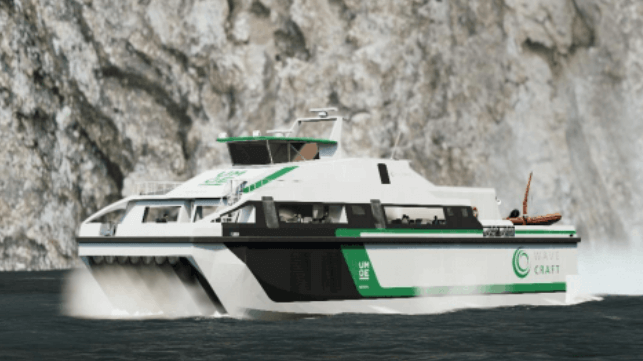TECO 2030 Leads Effort to Build SES Ferry With Hydrogen Propulsion

Fuel cell maker TECO 2030 has teamed up with the builder of the ultra-fast Skjold-class corvette - the swiftest warship in the world - to design a hydrogen-powered passenger vessel with surface effect ship (SES) technology. The objective is to create a 200-300 passenger vessel that can exceed 35 knots on zero-carbon fuel.
An SES vessel is the seagoing equivalent of a hovercraft, but instead of a wraparound skirt, the air pocket is retained between two catamaran hulls on either side and two rubber curtains fore and aft. The arrangement greatly reduces friction in motion, allowing high speeds. The most prominent example of this rare vessel type is the 60-knot, stealthy, heavily-armed Skjold-class, a capable missile boat with the seaworthiness of a corvette. SES vessels are also in service in the crew transfer vessel (CTV) industry for ferrying maintenance workers to and from offshore wind farms.
The builder of the Skjold-class, Norwegian composite boatbuilder Umoe Mandal, has partnered with TECO 2030 and BLOM Maritime to design a hydrogen-powered SES vessel for a different commercial application. The county municipalities of Finnmark, Nordland, Trøndelag and Vestland have launched a competition to solicit groundbreaking designs for high-speed vessels - including the world's first hydrogen-powered high speed vessel. The TECO 2030 consortium is one of three competing groups, and it will receive financial support of up to $500,000 to underwrite the project.
"We are humbled and proud to be qualified to develop the high speed craft of the future, powered by hydrogen and TECO 2030 fuel cells. This proves our ability to lead advanced vessel development and design, whether it is retrofitted or newbuilding through our maritime expertise," said Tore Enger, CEO of TECO 2030.
In 2022-23, the three competing teams will hone their designs. At the end of this initial phase, one consortium will be selected to build and test out a prototype vessel, which will begin pilot operations in 2025.
